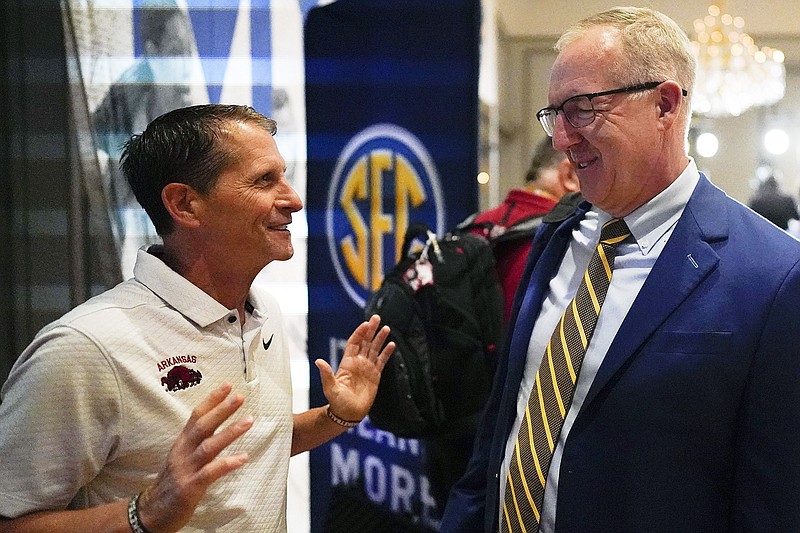I fear he’s going to get his way. And if he does, I know he’s going to mess it up.
The men’s NCAA Tournament is one of the sports highlights of the year. It’s an opportunity for the little guy to grab the sports spotlight, even if it’s just for a game or two.
But SEC commissioner Greg Sankey doesn’t care about Cinderella stories. About 18 months ago, Sankey started talking about taking a look at expanding the tournament from its current total of 68. Then he was co-chair of a committee that recommended doing that very thing. Funny how that works.
And he’s got an idea of exactly who should fill those extra spots. I’d paraphrase what Sankey thinks about how schools should be selected to the NCAA Tournament, but it might be better to let him speak for himself from an interview earlier this month with ESPN.
After noting the SEC and Big 12 are jumping to 16 members and the Big Ten is bursting at the seams when it has 18 starting next season, Sankey essentially said bigger means they’re better.
“We are giving away highly competitive opportunities for automatic qualifiers (from smaller leagues), and I think that pressure is going to rise as we have more competitive basketball leagues at the top end because of expansion,” he said.
But bigger doesn’t always mean better. Is the SEC going to be better in basketball with the additions of Texas and Oklahoma? Texas did make the NCAA Tournament as a No. 7 seed and Oklahoma was on the fringe of making the field until automatic bids for conference tournament winners burst that bubble in the final few days before Selection Sunday.
This season, eight SEC teams were selected to the tournament. That’s more than half of the conference that made the field of 68.
How’d they do?
Two days into the tournament, those elite eight representing where things just mean more were a combined 3-5.
Third-seeded Kentucky? Out in an 80-76 decision to No. 14 Oakland.
Fourth-seeded Auburn? Booted by No. 13 Yale.
Sixth-seeded South Carolina? Out by 14 points in a loss to No. 11 Oregon.
Seventh-seeded Florida? I’ll give the Gators some credit, they played an entertaining game in losing 102-100 to Colorado.
Eighth-seeded Mississippi State? The Bulldogs lost to by 18 points to Michigan State in the very first game of the tournament. I call that pulling a Missouri, which has done that a couple of times in its less-than-storied tournament history.
The SEC winners? No. 2 Tennessee, No. 4 Alabama and No. 9 Texas A&M, the only conference team to play above its seed when it beat eighth-seeded Nebraska.
But with 16 members on the horizon, that’s more mouths to feed. And the NCAA Tournament is a money-making spigot.
Payments are made to conferences through what are called units. Each game a team plays -- win or lose, no matter the round -- is a unit and is worth a certain amount of money to be distributed to that conference, then to its members.
Last year, conferences were awarded approximately $2 million for each game a member played. The SEC played in 17 games, so that was around $34 million to divide between the 14 members. That’s about $2.4 million per school, or enough to pay an athletic director for two years, if a school actually has one without an interim tag. Again, pulling a Missouri.
But back to Sankey. In the same interview, he pointed out a 23-win Texas A&M team was left out of the 2022 tournament and teams such as UCLA advanced out of the First Four (the play-in games) in 2021 to make it all the way to the Final Four as an example of how poorly underrepresented power conference schools can be treated if they could only get an opportunity.
Sankey’s short-term memory somehow forgot the 2023 tournament where mid-majors San Diego State and Florida Atlantic navigated their way through the field to the Final Four. And this year, a 31-win James Madison team likely would not have been selected for the tournament if it didn’t win its conference tournament. But those aren’t the schools he’s concerned with, they don’t fit his narrative.
To heck with Cinderella stories, the ones that make the tournament great. The power conferences just want that glass slipper for themselves, preferably size 13 and stuffed full of money to make it fit nice and tight.

